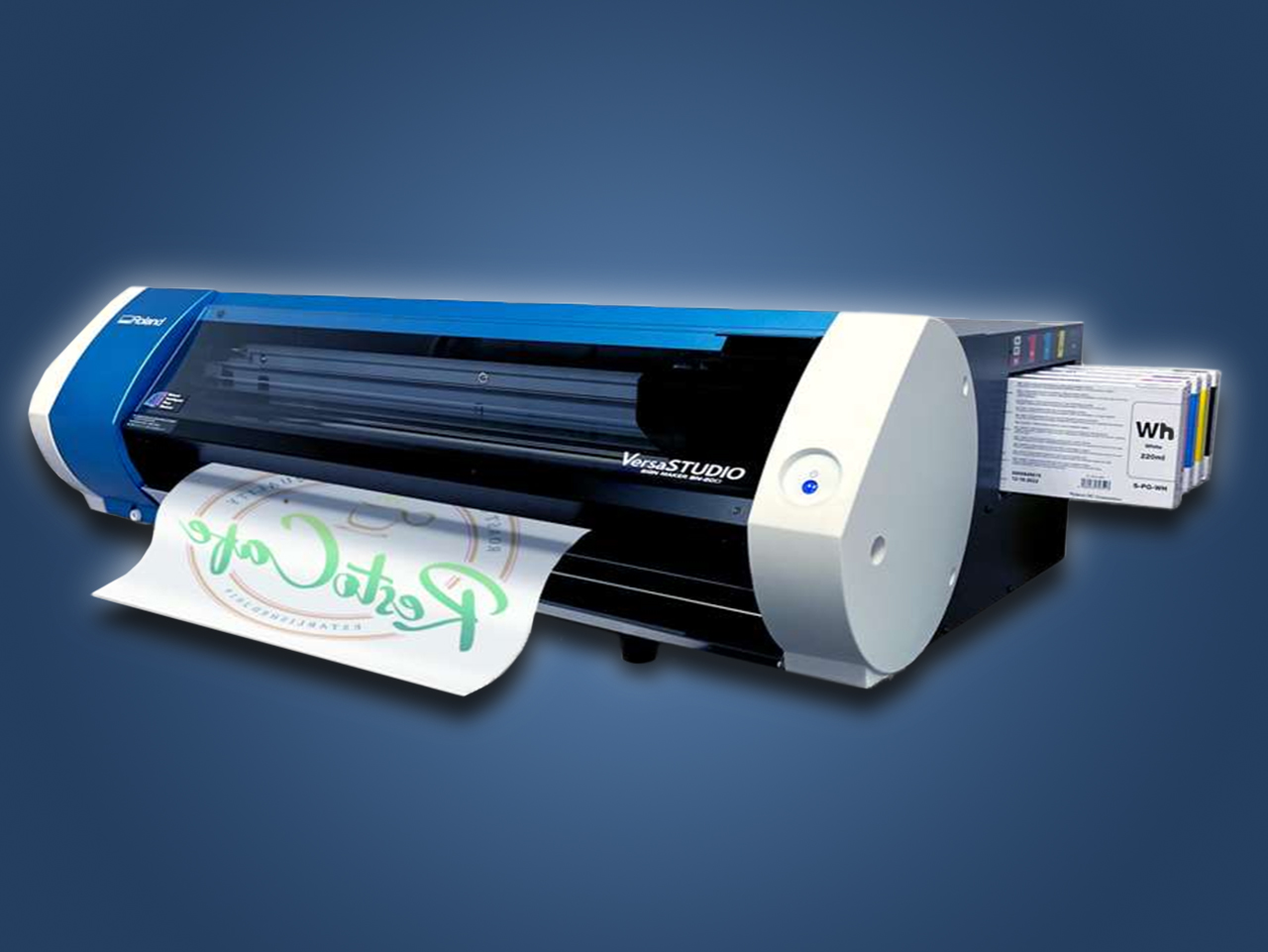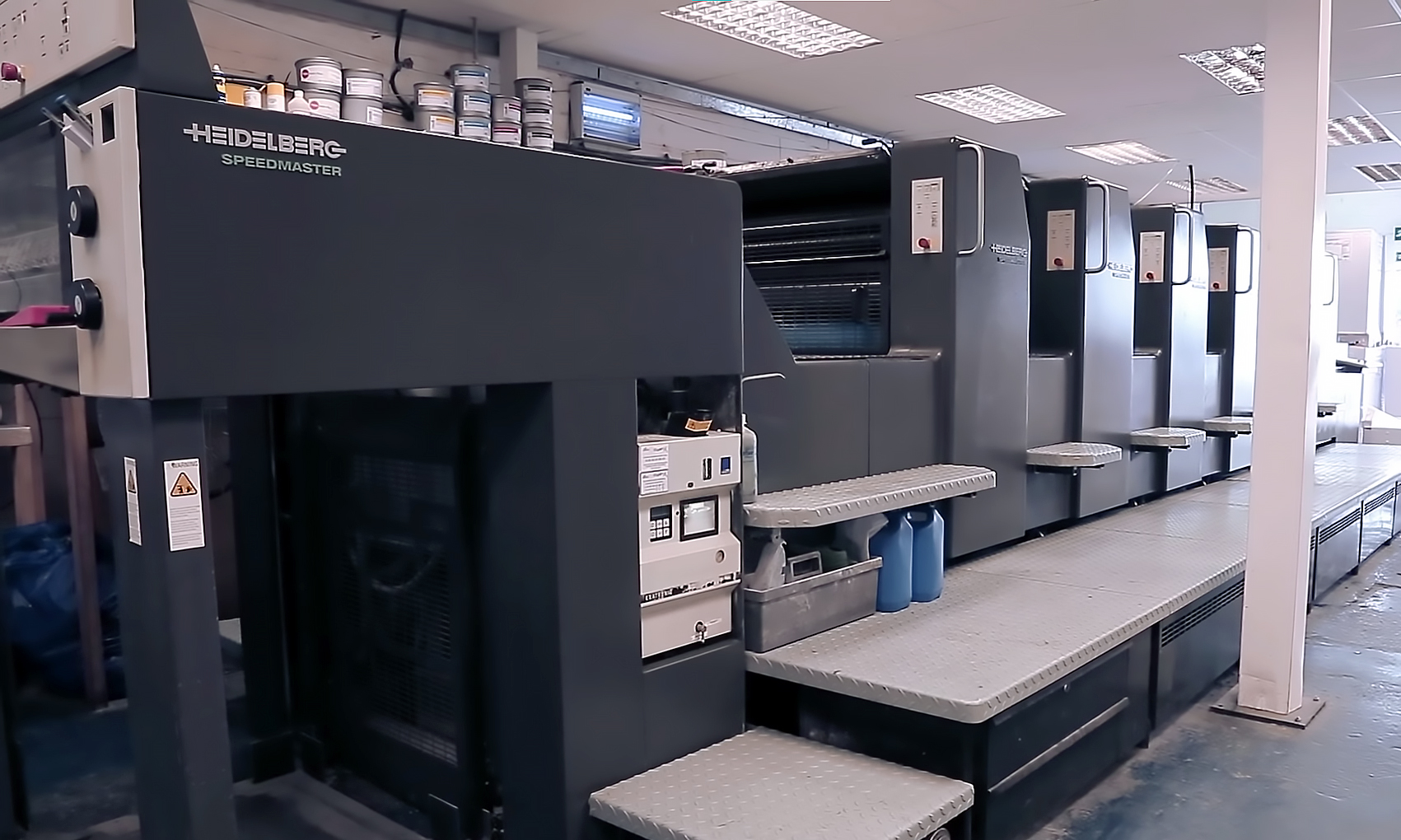
Printing 101: What is a Press? What is a Digital Printer?
In the ever-evolving world of printing, two stalwart technologies stand as the cornerstones of a myriad of visual communications: printers and presses. These instruments have played pivotal roles in shaping how information is disseminated, products are packaged, and art is brought to life. Printers, with their precision and capacity for customization, empower individuals and businesses to produce everything from striking brochures to vivid photographic prints.
On the other hand, presses, with their steadfast focus on efficiency and high-volume output, have revolutionized mass communication, churning out newspapers, magazines, and packaging materials at an astonishing pace. Understanding the nuances that set these two powerhouses apart becomes increasingly essential. In this article, we delve into the world of printers and presses, unveiling their intrinsic differences and guiding readers toward informed decisions in an intricate landscape where choice can define the success of a project or enterprise.
Printers: Personalization with Precision
Printer technologies encompass a spectrum of methods designed to transfer digital content onto various physical mediums. Among these, inkjet, laser, and digital printing stand as prominent players.
- Inkjet printers operate by propelling tiny droplets of ink onto paper or other substrates, resulting in high-resolution images and precise text. This technology excels in producing vibrant colour gradients and detailed graphics, making it a go-to choice for tasks demanding intricacy and photorealistic quality.
- Laser printing, on the other hand, employs a laser beam to generate an electrostatic charge on a drum, which then attracts toner particles, transferring them onto the paper. This method boasts rapid printing speeds, rendering it ideal for high-volume office printing.
- The pinnacle of precision, however, is achieved through digital printing, which encompasses an array of techniques like inkjet and laser. This approach ensures the exact replication of digital designs with minimal distortion, translating to consistent outputs across each print.
In this realm, precision is not just a luxury – it’s a necessity. Printers are tasked with reproducing intricate graphics, complex fonts, and detailed images, often on a vast array of substrates. The importance of precision, resolution, and colour accuracy in printer outputs cannot be overstated. For businesses, achieving exact colour matches and reproducing company branding faithfully can be the linchpin in fostering a consistent image across various marketing materials. In artistic contexts, such as fine art or photography, printers are expected to capture the nuances of tone, shade, and texture, allowing for the creation of museum-quality reproductions. Whether it’s a sleek presentation for a client, a wedding album capturing precious moments, or a high-impact poster, the precision that printers deliver transforms digital visions into tangible realities that resonate with their intended audiences.
Presses: The Engine of Efficiency
Press technologies form the backbone of high-volume printing, offering the capability to replicate content on an industrial scale with remarkable efficiency and consistency. One of the foremost methods in this realm is offset printing, where a metal plate transfers ink onto a rubber blanket, which subsequently applies it to the printing surface. This offset process allows for precise colour registration and pristine image quality, making it a staple for producing magazines, books, and marketing materials in bulk.
Flexography, another robust press technique, employs flexible rubber plates to transfer ink onto various substrates, such as packaging materials. Its adaptability and ability to handle different ink types, including water-based and UV-curable inks, make flexography particularly fitting for tasks like label printing, flexible packaging, and corrugated board production.
In offset printing, the metal plate’s receptive areas attract ink while repelling water, preserving the image integrity during the transfer process. This approach excels in consistent, high-quality reproduction, crucial for large print runs where maintaining visual uniformity is paramount. Flexography, on the other hand, employs an anilox roller to regulate ink volume, ensuring even coverage and sharp images on uneven or textured surfaces.
The press’s suitability for high-volume printing stems from its ability to churn out thousands to millions of copies without compromising quality. With efficient roll-to-roll mechanisms and fast-drying inks, presses like offset and flexography are designed to minimize downtime while maximizing output, making them indispensable workhorses in industries where consistent, large-scale reproduction is the goal.
Differences in Equipment and Technology
Printers and press technologies are characterized by distinct machinery and mechanisms that cater to their unique printing requirements. Printers, such as eco-solvent inkjet and laser printers, employ compact printheads or laser beams to deposit precise amounts of ink or toner onto paper or substrates. These devices often feature intricate mechanisms for paper feeding, alignment, and colour calibration, ensuring accurate image placement and colour consistency. The rise of high-speed inkjet systems has revolutionized large-scale printing by seamlessly integrating digital precision with the efficiency required for high-volume production.
In contrast, press technologies, such as offset and flexography, encompass larger, specialized machinery optimized for mass production. Offset presses consist of plate cylinders, impression cylinders, and blankets that work together to apply ink uniformly to printing substrates. Flexographic presses, on the other hand, employ anilox rollers, doctor blades, and plate cylinders to transfer ink accurately to diverse materials like packaging films and labels.
Digital presses, emerging from the digital revolution, have bridged the gap between conventional printing and digital convenience. These presses, whether utilizing inkjet or toner-based systems, deliver high-resolution, variable data printing with exceptional speed and precision, opening new avenues for personalized marketing materials and short-run projects that were traditionally not cost-effective using traditional press technologies. In essence, digital advancements have transformed both printers and presses, pushing the boundaries of what’s achievable in terms of quality, speed, and customization.
Printer and Press Applications
Printers shine in areas that demand fine detail and tailored output. In the business world, they play a pivotal role in generating marketing materials like outdoor advertising, brochures, business cards, and promotional banners, where accurate colour reproduction and branding consistency are essential. Printers also breathe life into art, enabling photographers and artists to produce gallery-quality prints that capture the subtleties of their compositions. The printer also is a great tool for producing architectural renderings, vehicle graphics and car decals.
Press technologies excel in applications where scale is of paramount importance. Offset presses, with their precise colour registration and consistent image quality, are the backbone of publishing, and producing books, newspapers, and magazines in large quantities. They also dominate the packaging industry, delivering eye-catching designs on everything from food packaging to luxury product boxes. Flexographic presses, celebrated for their adaptability to various substrates, find their niche in label printing, corrugated packaging, and flexible packaging, proving indispensable for industries that require visually appealing branding and information on a wide array of surfaces. The prowess of presses extends to producing advertising materials, direct mail campaigns, and retail displays, underscoring their role as the driving force behind mass communication and large-scale marketing efforts.
Navigating the Choice
When navigating the choice between printer and press technologies, business owners should undertake a comprehensive assessment tailored to their specific needs. Begin by clarifying the project requirements and objectives—whether it’s intricate designs or high-volume production. Consider the anticipated volume needs; if the requirement leans towards smaller quantities with customization, printers might be the ideal choice, while press technologies shine in scenarios requiring substantial output. Factor in budget constraints, accounting not only for upfront costs but also ongoing expenses like maintenance and consumables. Lastly, align your decision with long-term goals; if scalability is vital, presses offer the advantage of efficient mass production, while printers might better suit dynamic environments where rapid customization is key. In this deliberation, striking the balance between immediate requirements and future growth aspirations will pave the way for an informed and effective technology investment.
In the world of printing, the contrast between printers and presses offers choices that suit different needs. Printers excel in detailed designs and personal creations, while presses handle large-scale production effectively. These differences highlight various applications for industries and projects. Understanding these distinctions empowers individuals and businesses to make precise choices in their printing journey, whether it’s about personalization or volume. Both printers and presses contribute to the diverse symphony of modern communication and expression.
Are you at a crossroads between pursuing a printing business or a press-based operation? Let us help you make the right decision for your business aspirations. With our expert guidance and a wide range of cutting-edge printing solutions, we can tailor the perfect setup to match your goals. Whether you’re leaning towards high-quality printing, efficient press operations, or a combination of both, our team is here to provide the insights and support you need. Contact us today to explore the best path forward and turn your business vision into reality.











